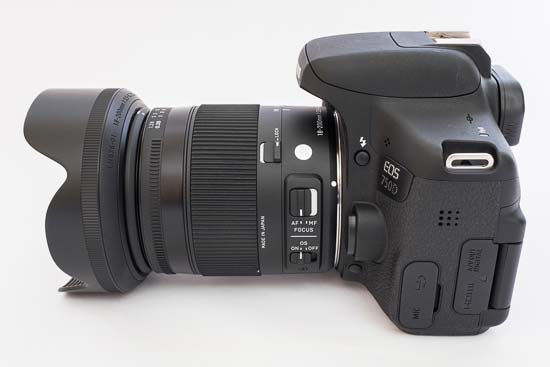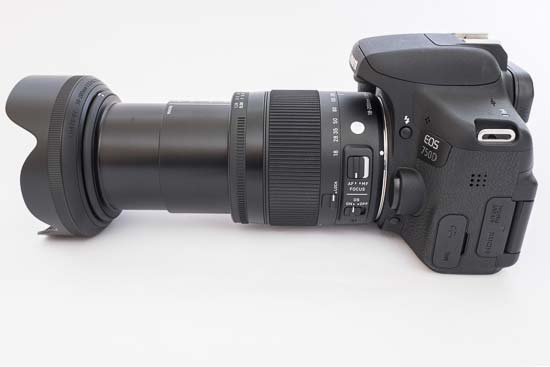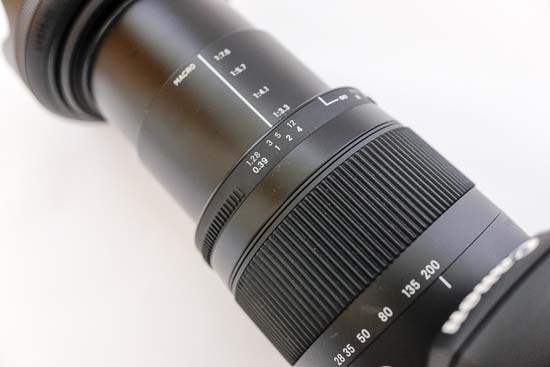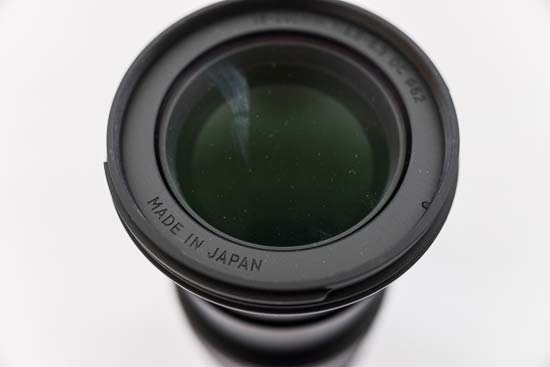Sigma 18-200mm f/3.5-6.3 DC Macro OS HSM Review

Introduction
The Sigma 18-200mm f/3.5-6.3 DC Macro OS HSM lens fits into the “Contemporary” range, marked by a “C” on the side of the lens. This lens is designed for APS-C (or crop sensor) cameras and is available in Canon, Pentax, Nikon, Sony A Mount and Sigma mounts. It is constructed from composite material in a construction which has been designed to be smaller and lighter than previous superzoom models. It also features an improved minimum focusing distance of 14.7 inches and features Special Low Dispersion glass. A Hyper Sonic Motor (HSM) is included for quick autofocusing, while there’s also an inbuilt optical stabiliser (OS) to keep images sharp. The Sigma 18-200mm f/3.5-6.3 DC Macro OS HSM retails for £249.99 / $399.99.
Ease of Use
Compared to many other superzoom lenses, the Sigma 18-200mm f/3.5-6.3 DC Macro OS HSM is relatively compact. This makes it a great lens to have on your camera all the time as a walk around lens. For this test, we have paired it with the Canon EOS 750D and it works well, not overbalancing the camera at all.
 The Sigma 18-200mm f/3.5-6.3 DC Macro OS HSM lens mounted on a Canon EOS 750D
The Sigma 18-200mm f/3.5-6.3 DC Macro OS HSM lens mounted on a Canon EOS 750D
 The Sigma 18-200mm f/3.5-6.3 DC Macro OS HSM lens mounted on a Canon EOS 750D
The Sigma 18-200mm f/3.5-6.3 DC Macro OS HSM lens mounted on a Canon EOS 750D
 The Sigma 18-200mm f/3.5-6.3 DC Macro OS HSM lens mounted on a Canon EOS 750D
The Sigma 18-200mm f/3.5-6.3 DC Macro OS HSM lens mounted on a Canon EOS 750D
On the side of the lens, there are three different switches for different tasks. There is a lock switch to keep it in its fully retracted position without accidentally extending when storing or removing it from a bag for example.
The other switches are to switch OS (optical stabilisation) on or off, and to switch between AF (autofocus) and MF (manual focus). Both of the switches have a good degree of stiffness to ensure that you won’t accidentally push the switches in either direction when you don’t want to.
 Side of the Sigma 18-200mm f/3.5-6.3 DC Macro OS HSM lens
Side of the Sigma 18-200mm f/3.5-6.3 DC Macro OS HSM lens
 Side of the Sigma 18-200mm f/3.5-6.3 DC Macro OS HSM lens
Side of the Sigma 18-200mm f/3.5-6.3 DC Macro OS HSM lens
With Optical Image Stabilisation switched on, you get a good degree of stabilisation which is particularly useful when shooting at the telephoto end of the optic, helping to keep your images blur-free when not using a tripod.
At the front of the Sigma 18-200mm f/3.5-6.3 DC Macro OS HSM lens is the manual focusing ring. If you try to turn this while the lens is in AF mode you’ll be met with quite a big degree of resistance. Once you switch to MF though, the ring will turn quickly and easily. The ring is marked with focus distance markers to assist you further.
 Top of the Sigma 18-200mm f/3.5-6.3 DC Macro OS HSM lens
Top of the Sigma 18-200mm f/3.5-6.3 DC Macro OS HSM lens
 Bottom of the Sigma 18-200mm f/3.5-6.3 DC Macro OS HSM lens
Bottom of the Sigma 18-200mm f/3.5-6.3 DC Macro OS HSM lens
 Side of the Sigma 18-200mm f/3.5-6.3 DC Macro OS HSM lens
Side of the Sigma 18-200mm f/3.5-6.3 DC Macro OS HSM lens
Around the middle of the Sigma 18-200mm f/3.5-6.3 DC Macro OS HSM lens is the zoom ring. Both this and the focusing ring have a ridged textured coating to give you a good grip, and also make the rings feel of a high quality. As you zoom the lens, you’ll see the front part of the lens extend, but it does not twist making it suitable for use with filters. The lens barrel features macro magnification markings, so you’ll be able to see what magnification you’re getting at different focal lengths.
A lens hood is supplied in the box which you can attach by lining up the markings on the lens. You can switch it around to face the wrong way when storing the lens or camera with lens attached.
 Side of the Sigma 18-200mm f/3.5-6.3 DC Macro OS HSM lens
Side of the Sigma 18-200mm f/3.5-6.3 DC Macro OS HSM lens
Focal Range
At 18mm you get an angle of view of 76.5 degrees.
 Field of view at 18mm
Field of view at 18mm
At the full zoom of 200mm, the angle of view is 8.1 degrees.
 Field of view at 200mm
Field of view at 200mm
Focusing
The Sigma 18-200mm f/3.5-6.3 DC Macro OS HSM lens is good at focusing in a variety of different conditions, but in less than bright light, it can take a little while to acquire focus - especially at the telephoto end of the lens. A false confirmation of focus is very rare, while in very dark conditions it may struggle to lock on at all.
Chromatic Aberrations
The Sigma 18-200mm f/3.5-6.3 DC Macro OS HSM lens shows a good resistance to chromatic aberrations, but it’s possible to see it occurring in some high contrast areas of images. Generally speaking, it’s not enough to be problematic for average printing or web sizes, being really only particularly visible when examining an image at 100%.
 |
 |
Vignetting / Light Fall-off
Shooting at 18mm at the lenses widest aperture of f/3.5 it’s possible to see some light drop off in the corners of the image. The effect is lessened at f/4.0, and is almost non-existent at f/5.6. It’s a decent performance considering that f/4.0 is a reasonably wide aperture.
Other focal lengths have different maximum apertures. At the longest focal length of 200mm, the maximum aperture is f/6.3 - here there’s quite a significant amount of light fall off around the outer edges of the frame, which persists into f/8.0, and is almost gone by f/11. Depending on the subject you’re photographing you may or may not notice the dropoff.
 Vignetting at 18mm
Vignetting at 18mm
 Vignetting at 200mm
Vignetting at 200mm
Distortion
At the wider focal lengths, such as 18mm and 28mm, it’s possible to see some distortion when shooting geometric subjects. As you might expect, if you get too close to a normal subject at these wide angle lengths you can also see distortion happening.
 Distortion at 18mm
Distortion at 18mm
 Distortion at 200mm
Distortion at 200mm
Macro
The Sigma 18-200mm f/3.5-6.3 DC Macro OS HSM can be quite useful as a macro lens if you don’t have a dedicated optic in your kit bag. It has a minimum focusing distance of 39cm / 15.4inches and a maximum magnification ratio of 1:3.
 Close-up performance
Close-up performance
Bokeh
Although the Sigma 18-200mm f/3.5-6.3 DC Macro OS HSM lens doesn’t have a particularly wide aperture, in some circumstances you can create attractive shallow depth of field effects. Background blur is well produced and smooth - you can judge for yourself from the pictures below.
 |
 |
 |
 |
Sharpness
In order to show you how sharp this lens is, we are providing 100% crops on the following pages.
